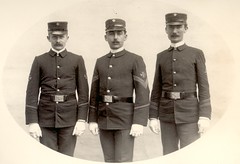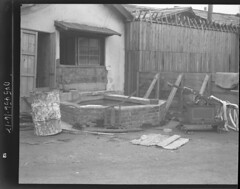FMT/AEM/caw
16 September 1959
MM
Miss Mabel E. Winslow
Editor
Daughters of the American Revolution Magazine
1776 D Street, N.W.
Washington 6, D.C.
Dear Miss Winslow:
During the Civil War, General William A. Hammond, Surgeon General of the Army, because of his great concern over what he believed was an excessive loss of life and limb from the type of wound encountered, directed all of his medical officers to forward the amputated bones to a central collecting agency for study. This central collecting point was to be known as the Army Medical Museum. Here was one of the first organized research programs of the military services and from this humble beginning, continuing to this day, has grown the now world renowned Armed Forces Institute of Pathology.
The Institute will celebrate its hundredth anniversary during and concurrently with the Civil War Centennial. During its lifetime, in addition to the pathological and anatomical collections, many instruments and other items of great historical significance have come into the possession of the Institute. Every effort is made that these be preserved and used to encourage youth to follow the footsteps of those great medical men who once used them.
While the Institute itself is located on the grounds of the Walter Reed Army Medical Center, the Medical Museum, one of its four major departments, is located in the downtown area of Washington where it can better carry out its mission of service and interest to the public. It is here that the military services portray the developments in the field of medicine and the resultant benefits to all mankind. More than 300,000 visitors will pass through the Museum this year.
The Museum is now planning its exhibits for the hundredth anniversary of the Institute. Consequently, we are seeking items which will enable us to have the finest, most complete exhibits possible.
Enclosed is an article which would help us considerably in locating desired material. We would be most grateful if you were able to make space for its insertion in your Magazine.
Whatever you are able to do for us in this matter will be greatly appreciated.
Sincerely yours,
Frank M. Townsend
Colonel, USAF, MC
The Director
1 Encl
Article
Coordination:
Roger H Fuller
Captain, MC, USN
Deputy Director
Albert E Minns Jr
Colonel, MSC
Curator, Medical Museum
--
AFIP SEEKS OLD INSTRUMENTS
The Armed Forces Institute of Pathology is seeking military medical material to expand the many famous collections of historical items in its Medical Museum.
The Medical Museum is dedicated to the collection, preservation and display of such material. It is one of the four major departments of the Institute, a national Institution jointly sponsored by the Army, the Navy, and the Air Force. More than 300,000 visitors will pass through its halls this year.
The Museum has one of the finest collections of microscopes in the world. These instruments are displayed so as to show the evolution of the microscope from its origins through the most recent developments in electron microscopy. Few microscopes have been added to this collection in recent years, and efforts are now being made to fill the gaps, particularly the years from 1920 to the present.
The Institute will celebrate its hundredth anniversary during and concurrently with the Civil War Centennial. Museum personnel are now planning the exhibits for this occasion. Through the long history of the Institute a great number of historical instruments have been assembled, but among this material is very little of Confederate Army origin. Such items particularly are being sought.
Although budgetary limitations preclude the purchase of such items it is believed that there are a great number of instruments or other items which the owners might wish to place in the Museum where they will be carefully preserved for future generations. Any such donation would be greatly appreciated and due credit given.
It is requested that persons having items they might wish to contribute write The Director, Armed Forces Institute of Pathology, Washington 25, D.C., relative to their acceptability and shipping instructions.
.JPG)












